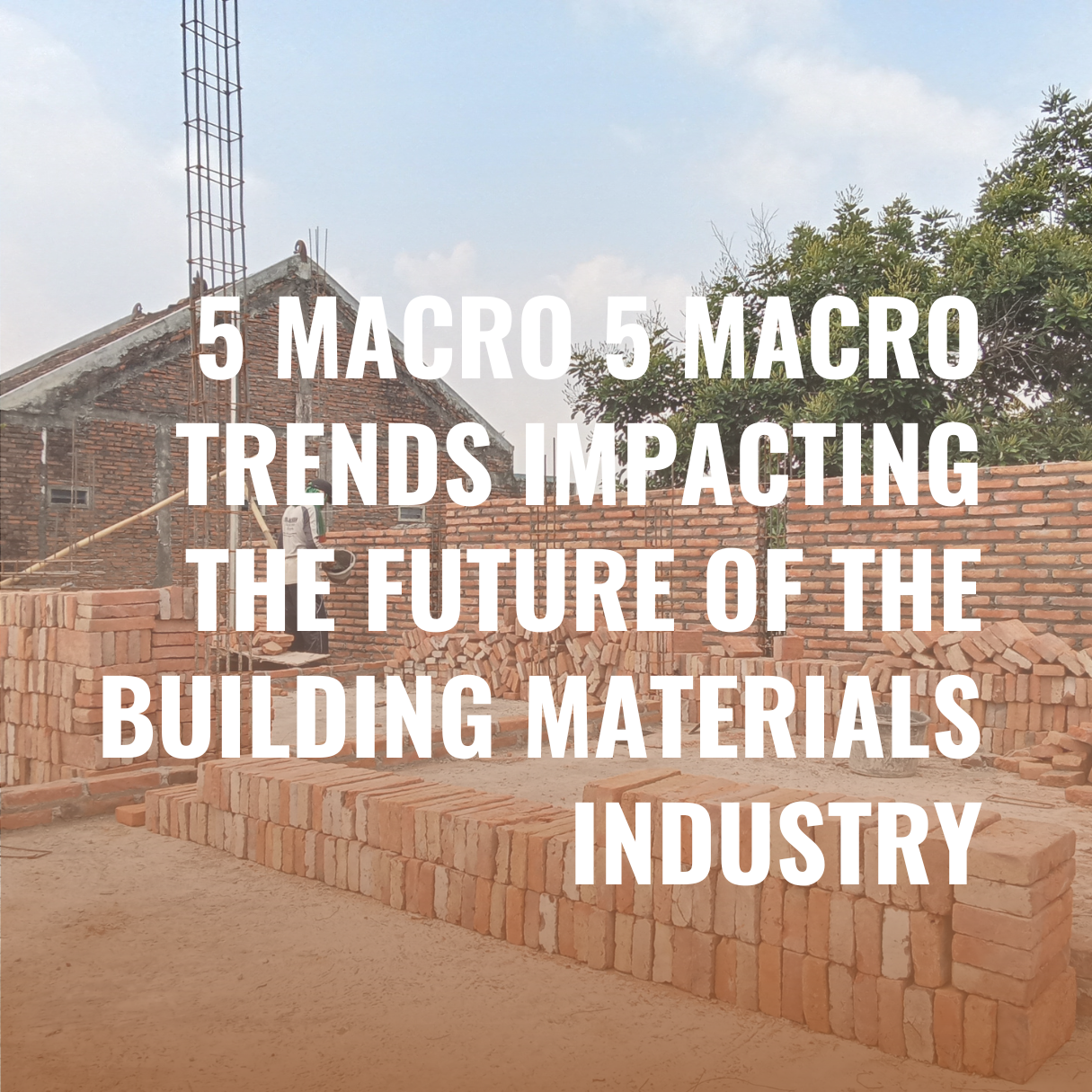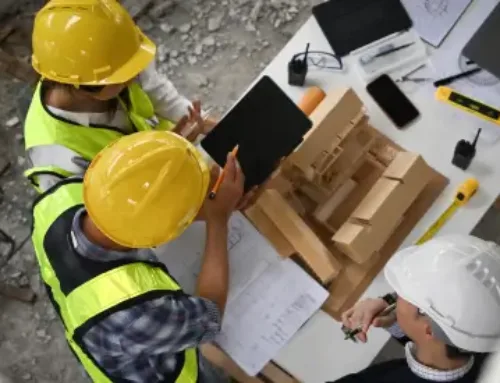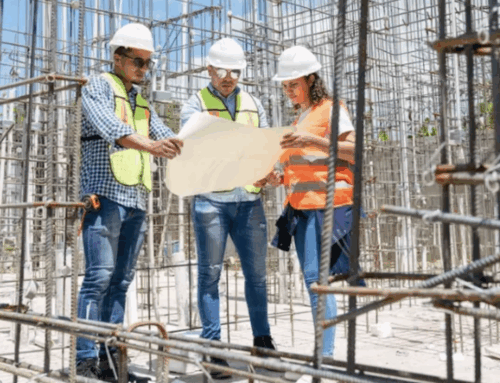The building materials industry isn’t what it was even five years ago—and the next five will be more transformational than most realize. Between climate imperatives, labor challenges, tech leaps, and shifting economics, materials makers, distributors, and users are all being pushed to adapt or risk being left behind. Here are five macro trends reshaping the landscape—and what to watch, act on, or invest in.
- Decarbonization & Sustainability as Non-Negotiables
What’s happening:
- Governments and regulators around the world are tightening rules on carbon emissions, embodied carbon, and environmental impact. Think stricter building codes, carbon taxes, incentives for green materials. Business Research Insights+5Emergen Research+5GlobeNewswire+5
- Consumers, building owners, and investors (especially in Europe and increasingly in North America / Asia) are demanding green credentials: recycled materials, low-carbon cement, bio-based insulation, etc. KoalaGains+3GlobeNewswire+3Scottmax.com+3
- There is innovation in “alternative” materials (fly ash, pozzolans, even non-cement binders), higher recycling/reuse, and material circularity. Reuters+3Towards Chemical and Materials+3Bonafide Research+3
Why it matters:
- Materials that can’t meet the new environmental thresholds will become less marketable, more taxed, or phased out for regulatory/commercial reasons.
- Switching to greener materials isn’t just PR: it’s increasingly tied to cost of compliance, permitting, financing.
- Early movers who can supply low-carbon, sustainable, certified materials will have a competitive edge and access to new markets (government contracts, green building projects).
What to do:
- Audit your materials portfolio now for embodied carbon and regulatory risk.
- Invest in R&D / partnerships to develop or source greener alternatives.
- Monitor regulation trajectories (local, national, global) so you’re not playing catch-up.
- Supply Chain Modernization + Resilience
What’s happening:
- Material shortages, raw material cost volatility, trade disruptions are no longer “once in a while” problems. The pandemic, geopolitics, inflation—they laid bare how fragile materials supply can be. Marsh+2GlobeNewswire+2
- There’s growing digitalization: using IoT, analytics, AI to track inventory, forecast demand, optimize logistics. Emergen Research+3KoalaGains+3Phocas Software+3
- Increased interest in localizing / regionalizing supply to reduce risk, shorten lead times, cut transportation emissions. Also prefabrication and modular components to reduce site-dependency. KoalaGains+3Bonafide Research+3Towards Chemical and Materials+3
Why it matters:
- Buffering the material pipeline means fewer delays, fewer cost overruns, more reliability for contractors.
- Digital supply chains + better visibility can reduce waste, improve margins.
- Companies who invest in resilient supply strategies will be more attractive partners (i.e. primes, developers prefer suppliers with less risk).
What to do:
- Apply technology/data tools to forecast material demand & monitor inventory in real time.
- Reevaluate sourcing strategies: alternative suppliers, regional sources, stockpiling critical inputs when feasible.
- Incorporate modular/prefab elements where possible to reduce site dependency and lead-time risk.
- Labor Shortages, Skills Gaps & Workforce Shifts
What’s happening:
- The industry is dealing with an aging workforce in many markets, a shrinking pool of skilled trades, and increasing competition for labor. Phocas Software+1
- At the same time, there’s rising demand for workers with technical skills: installing modern materials, doing precision work, digital tools, etc.
- There’s also more push toward diversity, training new demographic segments (e.g. younger workers, immigrants, under-represented groups) to offset shortages. Phocas Software+1
Why it matters:
- Without skilled labor, even if you have the best materials & designs, execution suffers: delays, quality problems, safety risks.
- Skilled labor shortages raise costs, force premiums, or limit what you can bid on.
- Workforce dynamics influence which materials make sense: prefabrication, modular, or materials easier/faster to install will be favored as labor gets more expensive / scarce.
What to do:
- Invest in training programs; partner with trade schools, apprenticeship programs.
- Consider automation, robotics or tools that reduce reliance on labor-intensive steps.
- Focus on materials & products that are labor-friendly: faster installs, less specialized labor needed, etc.
- Digitization, Data & Smart Materials
What’s happening:
- Adoption of digital tools is accelerating: BIM, digital twins, IoT, sensors in building materials, AI for design & compliance. L.E.K. Consulting+4Emergen Research+4Bonafide Research+4
- Smart materials are emerging: materials that monitor their own condition (e.g., structural health), adjust to environmental conditions, or integrate features like energy storage or air / moisture control. Bonafide Research+2StartUs Insights+2
- Data analytics is being used for optimizing production, reducing waste, optimizing transport/logistics, quality control.
Why it matters:
- These tools allow for efficiency gains, cost reductions, better performance, longer lifespan of materials.
- Smart / “active” materials can become differentiators in bids.
- Better data helps reduce risk (for example, detecting issues early, improving forecasting).
What to do:
- Begin or deepen adoption of digital platforms for design, materials tracking, quality control.
- Keep an eye on material innovations that incorporate smart sensors or self-monitoring abilities.
- Use data from projects / materials performance to refine selections over time.
- Urbanization, Infrastructure Boom & Changing Market Demands
What’s happening:
- Rapid urban growth in many parts of the world (Asia-Pacific, Latin America, Africa) is generating massive demand for housing, infrastructure, roads, utilities. More cities = more building, more materials. Bonafide Research+2GlobeNewswire+2
- Meanwhile, in mature markets, there’s growth in renovation, retrofit, resilience upgrades (climate proofing, energy efficiency) rather than only new builds.
- Demand is shifting toward higher performance: fire safety, thermal performance, durability, materials that perform under climate stress (heat, floods, storms). Also, modular / prefab / faster build methods favored. GlobeNewswire+3Towards Chemical and Materials+3SESRIC+3
Why it matters:
- Materials suppliers need to gear for both quantity (in fast-urbanizing regions) and quality / specialty (in mature markets).
- Infrastructure projects often have long lifespans, political/regulatory scrutiny, tougher standards. Suppliers get judged not just on cost, but sustainability, resilience, life-cycle performance.
- The balance shifts: “cheap and standard” materials won’t cut it everywhere; parts of the industry will need to differentiate by performance, speed, and compliance.
What to do:
- Align R&D / product lines to both high volume and high performance / resilience materials.
- Monitor trends in infrastructure funding (government stimulus, resilience, climate adaptation) to anticipate demand.
- In mature markets, focus on retrofits, energy efficiency, sustainability (e.g. insulation upgrades, green façade systems, flood-resistant materials).
What This Means for Executives & Stakeholders
- Strategic Prioritization: You can’t do everything. Focus first on trends that pose risk (e.g., regulatory & carbon risk, supply chain vulnerability) while also preferring trends that offer opportunity (e.g., smart materials, sustainable brand positioning).
- Partnership & Collaboration: Collaborations among material manufacturers, tech companies, universities, regulators will accelerate innovation. Looking for partnerships to bring innovations to market is going to pay off.
- Agility: The winners will be those that can change direction quickly—for example, shift sourcing, pivot product lines, adopt new tech or materials. Keeping costs under control during the transition is key.
- Metrics & Transparency: Being able to measure things like embodied carbon, supply chain emissions, material lifecycle, product performance will become table stakes. Transparency will become a differentiator (and sometimes, requirement).






